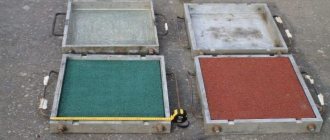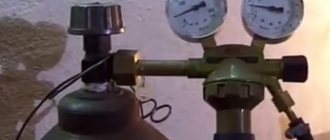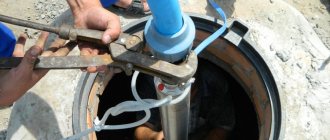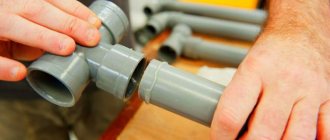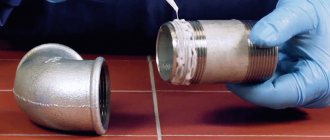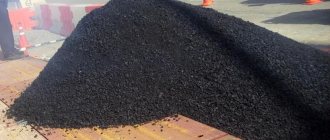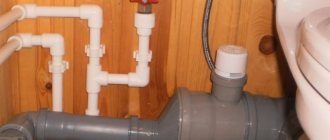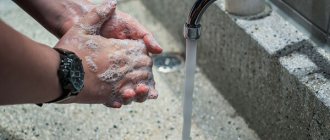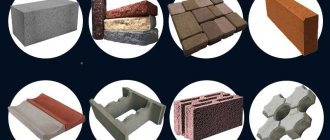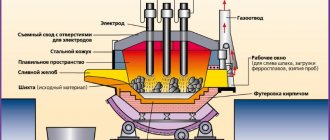Concept of vulcanization
Vulcanization is a chemical process during which raw rubber, improving the properties of the material in strength and elasticity, becomes rubber. In fact, rubber can be used as a special glue to seal a puncture in an inner tube or tire. Rubber vulcanization processes are as follows:
- electric;
- sulfuric;
- hot;
- cold.
Types of rubber
Rubber is one of the few materials that has different hardness. Depending on the percentage of sulfur, it is:
- soft – contains up to 3% sulfur;
- semi-solid – from 4 to 30% sulfur;
- hard – more than 30%.
Rubber is a natural material, and as a rule, products made from natural ingredients are of the highest quality and most durable. Therefore, components for bicycle and car wheels are made of soft rubber, which is based on rubber.
Recipe seven: DIY rubber glue
To prepare glue for gluing rubber, you need to take a piece of soft, unnecessary rubber (for example, an old car tire) and cut it into small pieces with a knife. Afterwards, pour them into a glass container (jar) and fill them with aviation gasoline, kerosene or regular gasoline. Place the solution in a warm place and keep it until the pieces of rubber dissolve into a uniform thick mass. This usually takes a day or two.
This type of glue (liquid rubber) is usually used in tire shops to prevent air from passing through the disc in tubeless tubes.
Electrical vulcanization of rubber
In general, vulcanization can be cold or hot. The electrical vulcanization process is a hot method. An electric stove with a ceramic heater is used as a heater at home; a hair dryer or a regular iron is also suitable. The optimal temperature for this method is 145C o. To determine the temperature, you can also use available means, for example, if a sheet of paper begins to char, it means that the temperature has reached the required values.
Electrical vulcanization of rubber
There are also special clamps with a heating element. Such devices can operate from a 220V household network, from a car battery, through a cigarette lighter socket, or from their own battery. It all depends on the performance of each device. These clamps are easy to use; you need to attach a rubber patch to the camera, clamp it and plug it into the network.
One-component polyurethane adhesive for crumb rubber
Considering the type of binder, the adhesive composition can be polyurethane or bitumen. The intended application depends on several factors: type of substrate, curing conditions and technical characteristics of the floor covering. Polyurethane adhesive has a number of advantages, namely:
- environmental Safety;
- moisture resistance;
- abrasion of the coating;
- resistance to mechanical damage;
- ensuring elasticity;
- long service life.
The one-component adhesive composition can be used for laying material not only indoors, but also in open areas. Due to the absence of solvents, the coating does not deteriorate under the influence of moisture, ultraviolet and sunlight, and temperature changes.
Sulfur vulcanization of rubber
After rubber vulcanization
This operation consists of a chemical reaction in which sulfur atoms are added to the rubber. When added up to 5%, it produces raw materials for the manufacture of tubes and tires. In the case of gluing two elements, sulfur helps connect the rubber molecules, forming a so-called bridge. This procedure refers to the hot method, but it is unlikely that it will be possible to do it on a hike or on the highway.
Features of polyurethane glue
What distinguishes the polyurethane composition from other adhesives is:
- Compound. The glue almost entirely, up to 95%, consists of solid synthesized resins and is a synthetic substance.
- Curing process. When the glue interacts with water vapor, a chemical reaction occurs with the formation of carbon dioxide bubbles. In this way it resembles polyurethane foam. The glue is applied in a thin layer, the composition interacts with air and expands, flowing beyond the application area. And so it hardens. After hardening, the excess that appears all over the seam is removed with a knife.
- Versatility of use. They can bond metal, wood, stone, plastic, and other non-porous materials. Glue firmly glues homogeneous and dissimilar materials, and it can be used to glue shoes, attach mirrors to wall surfaces, and use it to repair furniture.
High technical characteristics.
Advantages of polyurethane glue
Resistant to moisture. The property of water resistance allows the use of polyurethane compounds for gluing objects and materials used in conditions of high humidity or in contact with water. In this case, the moisture-resistant seam becomes a sealant.
Resistant to sub-zero temperatures and heat, temperature changes.
Chemical neutrality when interacting with gasoline, oils, and aggressive compounds. It is not recommended to use polyurethane glue for gluing elements made of silicone, polyethylene, polypropylene. But not because of chemical reactions, but because of the poor quality of adhesion.
Easy to use. The composition is convenient to use - it is easy to apply to the surface and distribute. A sufficiently long time before hardening (about 20 minutes) allows you to correctly position and fix the parts without haste.
“Important” For reliable adhesion between the parts to appear, you need to wait 1 hour. It is recommended to fully use the item or glued material within 24 hours.
No harm to the materials being bonded
It does not saturate porous surfaces with moisture, and there is no risk of product deformation. The glue can be used even when laying parquet without fear of swelling of the wooden pieces.
Hot vulcanization
Rubber, as a raw material, has the property of being welded into a single composition at a temperature of 150 °C. As a result of this process, the rubber becomes rubber and cannot return to its original position. Thanks to its capabilities, rubber can fix any punctures and cuts in the tube and tire.
It is necessary to vulcanize rubber using a hot method, only using a press. The depth and area of the cut will tell you how long to weld. Typically, it takes 4 minutes of cooking to repair a 1mm cut. Accordingly, if the cut is 4mm, then it needs to be vulcanized for 16 minutes. In this case, the equipment must be warmed up and configured.
By performing hot vulcanization at temperatures above 150C o, you can ruin the rubber and achieve nothing, since the material will deteriorate and lose its characteristics.
Using clamps or a press allows you to properly patch the damage. After finishing the work, you should make sure that there are no voids or air bubbles in the seam. If there are any, you need to clean the puncture site from fresh rubber and repeat the whole process again.
In order to hot seal a camera at home, you must do the following. From raw rubber, you need to cut a piece slightly smaller than the patch itself. The tube or tire is cleaned slightly wider at the damaged area, to a rough state, and then degreased with gasoline. When preparing the patch, you need to cut the chamfer at an angle of 45°, also sand and degrease. Then we cover the puncture site with a patch, clamp it in a vice and heat it to the desired temperature.
If you dissolve raw rubber in gasoline, you can get a special glue for rubber, the use of which improves the quality of the seam. Particular attention should be paid to temperature conditions. Vulcanization is carried out at a temperature of 140 - 150 ° C; if there is a smell of burnt rubber, it means the patch has overheated, and if it has not merged with the overall product, then it may not have reached the required temperature. To prevent rubber from sticking to metal, you need to place paper between them.
Do-it-yourself vulcanizers for tire repair
In order to repair a flat tire on a bicycle or car, you need a vulcanizer for inner tubes. The device can be purchased in a store or made by yourself. Raw rubber is used as the patch material. It consists of rubber sheets covered with polyethylene film on both sides. Due to its plasticity, under pressure and high temperatures it is welded to the chamber.
Features of Electric Vulcanizer
An electric vulcanizer is a household appliance that is used to repair chambers. It consists of 2 round elements. The camera is placed between them and clamped with a clamp. The device is connected to a voltage of 220 V.
There are electric car vulcanizers. They are also called road ones. Their operating principle is the same. The only difference is that the voltage is supplied to the terminals at 12 V. A machine battery is used for this.
Vulcanization of the chamber with raw rubber
The vulcanization process of a bicycle tube is carried out according to the following principle:
- The place in the chamber where the hole is located is prepared.
- Raw rubber is applied to this place.
- Compression is carried out using a heated press.
The heating temperature of raw rubber is 147 degrees. If you raise it to 150, it will collapse, and at 160 the charring process will begin. Exposure time - 8-10 minutes.
Instructions for vulcanizing a chamber at home consist of the following steps:
- Use sandpaper to clean the location of the hole. For this purpose, the use of an abrasive stone is allowed.
- A patch is cut out of raw rubber, usually round in shape. Its dimensions should cover the hole by at least 2 cm.
- Raw rubber is dipped in gasoline and placed over the hole in the chamber.
- Paper is placed on the rubber so that it does not stick to the vulcanizer.
- A vulcanizer element with a spiral is installed on top, and a lining is installed on the bottom.
- The clamp is used to apply pressure.
- Voltage is applied to the terminals.
- Cooking takes place for 8-10 minutes.
- The device turns off.
- The clamp is not removed until the device and chamber have cooled down.
Once removed, the connection appears as one piece.
Making a device from an iron
You can make a vulcanizer for repairing tires with your own hands from an iron.
You can do this as follows:
- Take 2 steel plates with a thickness of 8 mm and dimensions of 40 × 60 mm. They will be used as a press.
- All edges are chamfered so that the sharp edge does not cut the rubber.
- In one plate, 4 holes are drilled in the corners and an M12 thread is cut. In the second - in the same 4 places, holes with a diameter of 13 mm.
- Both halves are held together with bolts.
You can use the machine in this order:
- The damaged area of the camera is being processed.
- A patch is cut out of raw rubber, soaked in gasoline and applied to the hole.
- The camera with the patch applied to it is inserted into the mold and clamped with bolts.
- An iron is located below, and a mold is installed on it. It is important that they touch at the bottom.
- The iron heats up for 10-15 minutes.
When vulcanizing, you need to ensure that the rubber parts do not touch the heated iron.
Homemade device from an electric stove
A homemade vulcanizer can be made from an electric stove. To do this, select an old device with an open spiral.
The manufacturing procedure is as follows:
- The heater body is manufactured. To do this, take a sheet of metal 5 mm thick.
- Using welding, the body is formed to the size of the ceramic base of the tile.
- Rod legs are welded on the bottom and a clamp on the side.
- A sheet of asbestos is laid, and a ceramic tile base with a spiral is placed on top.
- The heater is closed with a metal lid, which is secured with bolts.
- The thermostat is removed from the iron and attached near the clamp.
The vulcanization process is no different from working with an iron. In this case, the heater automatically turns off the coil when the temperature reaches 147 degrees.
Piston mechanism
A piston from a car or motorcycle is used as a design element. This vulcanizer does not require electricity. This requires a supply of 50 g of gasoline.
Manufacturing procedure:
- The base is cut out of wood. Wood does not interfere with the heating of the rubber.
- A beam 10 mm thick is made of metal.
- In the wooden base and beam along the edges, 2 holes are drilled for M12 bolts.
A camera with a patch is placed on a wooden plank. A cylinder filled with gasoline is placed on top. And the entire structure is bolted together. The gasoline is set on fire. After it burns, time is given to cool. And then he sorts it out.
A vulcanizer is a very important device for a motorist. It is especially necessary on the road in case of an unforeseen situation. There is no point in making an expensive purchase at home. Since such a device can be made from used devices.
Source: https://obrabotkametalla.info/mexanizm/vulkanizatory-dlya-remonta-shin
Making a vulcanization device
Each vulcanizer has two main elements - a heating part and a clamping device. The basis of such rubber processing equipment can be used:
- iron;
- “bazaar” electric stove;
- piston from the engine.
In a device with an iron, the heating part is the surface that is used for ironing in everyday life. If we plan to use an electric stove, then the heating coil should be covered with a metal sheet, and when working, you need to place paper between the rubber and the metal. Such a device must be equipped with a thermostat to avoid overheating of the material.
The pressing part of the vulcanizer is easiest to make from a clamp. The simplest device to manufacture would be a device consisting of an iron and a clamp. Since they are both metal, joining them using arc welding is not difficult. The iron also has a thermostat.
A piston vulcanizer also uses a metal plate. A rubber bladder is placed on it. The piston, with its smooth part, which is in contact with the explosive mixture in the engine, presses down the patch using a homemade clamp. Paper is also placed between the piston and the patch. After that, gasoline is poured into the piston and ignited.
Such a device made from a piston is especially useful on the road, when there is no way to connect to the electrical network. However, such a device does not have a thermostat, and the temperature will have to be controlled manually.
Rubber tiles
Such tiles are resistant to frost and high temperatures, friction, deformation, moisture and ultraviolet radiation. It can be laid on any surface that does not require special preparation - asphalt, concrete, stone, paving stones. The excellent anti-slip properties of rubber tiles make them popular for use in places where a high level of safety is required (nursing homes, hospitals, schools and kindergartens).
Polyurethane adhesive is added to the base of the tiles during their manufacturing process at the factory, which makes their installation using such a binder very reliable and durable. The tiles are installed using a floating method using a special polyurethane-based adhesive. This polyurethane adhesive, which is absolutely harmless to the environment and humans, has good adhesion properties due to deep penetration into the porous structure of rubber tiles.
Pros and cons of vulcanization
The main advantage of the tire repair process is that it is cheaper to repair than to buy a new one. However, each situation is individual, so it is important to determine whether repairs will save the situation.
The cold method is quite easy to use, it will not take much time, and the costs will be minimal. The main disadvantage of this method is the unreliability of gluing. This procedure is temporary, and you should contact a service station as soon as possible.
Hot vulcanization reliably welds rubber, allows such work to be carried out at any temperature and has a low cost.
So, you can repair a tube or tire in different ways, but it is better to entrust this work to specialists, because it is for your own safety.
If you find an error, please select a piece of text and press Ctrl+Enter.
It is impossible to do without glue in many types of needlework, when repairing and repairing, and, of course, when carrying out various construction work. Usually, for each type of activity there is a specific type or grade of glue, which can be purchased at a specialized store, or you can make it yourself.
Often, a home-made compound turns out to be even more effective and reliable than a factory-made one. Is it difficult to make glue for certain types of materials? The individual required ingredients can sometimes be quite difficult to find, but, one way or another, the product you make yourself will be of quite high quality.
In a water bath
Preparing the main component for slimes in a water bath makes it possible to obtain an absolutely transparent product. Thanks to the antiseptic, it will last a long time and will not acquire an unpleasant odor. And glycerin will give softness and shine, which will have a positive effect on the appearance of the slimes.
- 50 g PVA,
- 400 ml cold water,
- 20 ml glycerin,
- 20 ml hand sanitizer.
How to make homemade slime glue
- Polyvinyl alcohol should be poured into a container with cold water.
- The granules should be allowed to swell for 5-10 minutes, stirring the contents of the dish with a spatula.
- Then it is transferred to a glass jar, which is placed in a water bath.
- The heated mass must be stirred periodically so that it does not burn and lumps do not form in it.
- When the PVA particles melt and completely combine with the liquid, remove the container from the water bath and cool the resulting product to room temperature.
- Then the almost finished glue is poured into another container, filtered through a fine strainer.
- Next, an antiseptic hand solution is added to it.
- And you also need to add glycerin.
- The mass is stirred by shaking the closed bottle with it several times, and the glue is ready.
We recommend: The anti-stress toy sticks to your hands: what to do in this case? Reasons for such slime changes and tips
Epoxy glue: manufacturing
To make such a composition you will need a modified resin and a special hardener. If the product is intended to be used in construction work, various additives may be required.
This could be aluminum powder, for example. Epoxy glue is quite difficult to prepare yourself; you must follow the instructions exactly.
The hardener and epoxy resin mix well: forty parts of hardener you need to take sixty parts of resin. After the mixture thickens well, place it in water heated to seventy degrees. All necessary fillers are added to the mass last, to give it the required consistency. The product must have a certain fluidity so that it can be easily and simply applied to the prepared surface.
Polyurethane adhesive, one-component and two-component – application
This durable composition is used for gluing various surfaces. It is indispensable for working with porous materials and can withstand exposure to moisture and aggressive environments. Thanks to its advantages, it has found application in various fields and is used for a variety of purposes:
- In the shoe industry. It provides high-quality bonding of soles and leather surfaces. Pairs perfectly with synthetic leather, rubber, polyurethane and other artificial materials.
- For fixing ceramic tiles and expensive mosaics. Manufacturers recommend glue because of its reliability; the composition prevents elements from falling off.
- For cladding wooden, metal surfaces, facades with any materials. For example, marble, natural stone. It is advisable to use the composition in places subject to vibration.
- For cladding walls of rooms where there is high humidity. These are showers, kitchens, saunas, balconies.
- For the production of sandwich panels.
- In the production of metal-plastic windows. The corner parts of the structure are assembled using glue.
- When carrying out repairs or finishing work. The glue perfectly holds together bricks, glass, wood, concrete, slate, ceramics, and the composition will cope well with a combination of different materials.
- For the production of garden furniture.
- For gluing artificial turf.
- For arranging children's playgrounds and tennis courts by gluing products made from crumb rubber.
- For protection and insulation of metal pipes.
- Bonded surfaces withstand harsh use.
Bonding technologies
Specialists use the following methods in their work:
- Cold. It is based on applying a thin layer of glue in two stages. The first layer is applied evenly and left for 15 minutes, then another layer is left for 5 minutes. After this, the working parts are pressed tightly. The surfaces to be bonded are pre-cleaned and degreased.
- Hot. Glue is applied to the prepared elements and left for up to 30 minutes. Then the surfaces are heated to a temperature of 70-90 degrees and pressed against each other using a press.
- Wet. It involves pre-treatment of surfaces with water. This is necessary for the best adhesion - as a result of a chemical reaction, a solid polyurethane film is formed.
The duration of curing of the glue depends on the ambient temperature. Once completely dry, the composition holds up well against the elements. It reacts to changes in humidity levels. That is why, when gluing elements of a wooden floor or parquet that are capable of movement, it will stretch along with them. In addition to elasticity, the composition has another excellent quality - it protects the seams from the negative effects of moisture.
What is the difference between two-component polyurethane adhesive and one-component one?
There are different types of glue, but they are all characterized by a single property. It lies in the fact that when interacting with the atmosphere, the compositions increase in volume. This allows them to be used for gluing porous structures. One-component formulations are ready for use at any time, two-component formulations must be prepared before use. As a rule, the viability of the finished composition does not exceed 3 hours. Before cooking, you should consider how much you can use during this time.
Best glue: PVA at home
It is the most common glue, actively used not only for simple household work, but also in industrial construction.
It is successfully used as wallpaper glue, it is used for priming surfaces before finishing, and added to the composition for gluing tiles.
It has such a wide scope of application that we can confidently say that for a zealous owner it turns out to be a real lifesaver.
How to prepare glue according to instructions?
To do this you will need:
- Glycerin – about 4 grams;
- Distilled water – 1 liter;
- Wheat flour – 100 grams;
- Photographic gelatin – 5 grams;
- Ethyl alcohol – 20 mm.
The cooking process consists of two stages. In preparation, gelatin is soaked in prepared water for 24 hours. Then comes the main stage of preparing the PVA adhesive composition. Place a bowl of distilled water in a water bath.
What would be the best option?
Among the large number of options, there are undoubtedly those that will better cope with the immediate task of clutching. However, high strength, as a rule, determines the corresponding cost, and cheap products often lose in terms of wear resistance. If we talk about the optimal solution, then we should answer the question regarding which glue is used for rubber boats more often than others. This will be a one-component rubber-based composition designed to work with polyvinyl chloride.
Perhaps the most common representative of this group is “4508” glue. With its help, boat owners quickly and inexpensively eliminate defects on the surface of the hull. The composition of this product includes rubber and resins, which during the hardening process acquire elasticity and adapt to the structure of the boat fabric.
Need wood glue? Wood glue
Perhaps this is one of the most successful compositions for wood. But it also firmly and reliably connects cardboard, paper and many other materials.
But this tool has some characteristic features:
- It cannot be stored in liquid form for a long time, as it begins to deteriorate: it gelatinizes and mold forms on the surface.
- The composition has an unpleasant, rather pungent odor.
The most commonly used are the following:
Cook the glue in a water bath
- Simple wood glue is crushed, then soaked in water until it swells greatly. In the process, it becomes jelly-like and quite soft. Next, it is placed in an oilcloth (you can use a regular tin can for this) and gently heated in a water bath with constant stirring. A wooden stick is used for this purpose.
If the mass suddenly burns, it will turn yellow and lose some of its working adhesive qualities. When the mass turns into a thick liquid, add vodka to it in a ratio of 950 to 720. Vodka, respectively, is 950 grams, and the mass is 720.
- Carpenter's glue and half-and-half water must be boiled in an oilcloth. After the boil begins, when the mass begins to thicken, you need to pour it into a porcelain mortar and then grind it with a pestle.
The result should be a gelatinous, homogeneous mass, which is laid out on a special plate and cooled. Then it is cut into pieces. To use, approximately 720 grams of the product are dissolved in a mixture of vodka and water (360/720), bringing the resulting product to a boil. - In a liter of water in a water bath, you need to heat a kilogram of wood glue and a liter of table vinegar. After the adhesive substance has completely dissolved in the liquid, add a liter of vodka and mix well.
Foam glue base
Today, foam plastic is often used to insulate and warm homes. Plates of this material are usually glued to load-bearing walls. To carry out this procedure, you will need a special glue, just any kind will not work here. The fact is that some solvents, such as acetone, can melt the material.
The ideal adhesive for polystyrene and polystyrene foam is the already mentioned carpentry compound.
But at home you can make another product for gluing such materials - one that contains cottage cheese. Slaked lime is mixed with cottage cheese in equal proportions until a fairly homogeneous substance is obtained. This composition hardens quite quickly, so you need to prepare it in the required quantity and use it immediately.
How to make glue from casein
Casein glue is suitable for a variety of leather and wood products. To prepare it you will need regular cottage cheese, which must be degreased. It is soaked in an aqueous solution of soda (one or two tablespoons per liter of water) for about twenty minutes. Then it is washed with clean water, wrung out well and dried. The mass should harden. It is crushed to obtain a dry powder - this is casein.
To prepare the glue, a certain amount of it is placed in a container, where water is added in a thin stream, with constant stirring, in a ratio of one to two (there should be more liquid). It turns out to be a rather thick mass. It is very important to take a responsible approach to the mixing process - the quality of the resulting product directly depends on it.
This event usually takes up to half an hour.
Turbo composition - liquid glue from old linoleum
In addition to the above, there are many different methods for preparing high-quality glue for glass, blocks and PVC.
This composition, prepared at home, can be successfully used for pasting walls and ceiling surfaces. It is enough to choose from a variety of recipes the one that best suits you.
A very simple and affordable way is to use old, used linoleum and acetone. The process is very simple. Linoleum must be crushed (cut with a knife or scissors) into small fragments that need to be placed in an airtight container.
Then add acetone there, in an amount twice the amount of the first ingredient.
Close the container with the contents tightly and leave in a dark place for about half a day (12 hours). Usually this time is enough for the pieces of flooring to dissolve completely.
The resulting product can reliably connect products made of porcelain, metal, leather, wood, ceramics and other materials.
Adhesive manufacturers
A large number of polyurethane-based adhesives are sold in stores. Domestic and foreign manufacturers provide such products to the market. Here are the most popular brands:
- "Anles." The company's product range includes about 10 polyurethane adhesives for industrial and household use. The adhesives “ADV”, “Vilad”, “Polyurethane”, PVC Fix and others have earned the respect of users. All of them are used for gluing PVC, rubber-fabric products, polyurethane, thermoplastics, leather, glass, and metal.
- "Titanium". This brand produces several adhesives in cylinders intended for professional and home use. Especially known is the “Universal” foam adhesive - a one-component composition for external and internal work, quick-drying, and highly fire-resistant. Another good composition is Bonolit “Heat Formula”. This glue is so strong that it is used for laying blocks, constructing external and internal walls, as well as partitions. It serves as an alternative to conventional cement mortars.
- "Desmokol." Widely used in shoe factories, it reliably holds rubber and polymer materials together. Available in small tubes, jars and even 200 liter barrels.
- Kenda Farben. The company presents on the market a very high-quality polyurethane composition SAR 306, which has high heat resistance. It is used for gluing soles made of PU, TEP, and various rubber products. The addition of a special hardener increases the adhesion of other difficult-to-glue materials.
- Sika. This Swiss brand produces a whole line of polyurethane-based products. Particularly well known is the polyurethane sealant Sikaflex, which has high tensile strength, resistance to moisture, chemicals and physical impact.
- Inov. Cold-curing polyurethane binder of this brand from China is used for laying seamless coatings, producing rubber plates, crumb rubber, and rolls.
- Henkel. Products from the Ceresit line are high-quality adhesives for tiles and other materials. The most famous polyurethane adhesive is Ceresit CT 84 - a means for fixing window sills, filling gaps between polystyrene foam boards, aerated concrete blocks, and for attaching thermal insulation. Also on sale is Moment Crystal glue from Henkel - a transparent polyurethane gel for all types of materials, except Teflon and polyethylene.
- "Polinor". Polynor Stik adhesive is a one-component composition for fastening extruded polystyrene foam, aerated concrete, panels, and mineral wool. Can be used for sealing seams and open areas, for fastening decorative elements.
- Soudal. Under the Soudal brand, polyurethane adhesive Soudabond Easy is produced - a professional composition in cylinders for fastening mineral wool, cork, plasterboard, glass wool, foam blocks and fiber-cement boards.
- "Lighthouse". Super NN adhesive from this manufacturer is intended for banner fabric, leather, laminate and parquet, all types of plastic, polyurethane, as well as rigid PVC and ABS. Before use, it is necessary to clean the bases with Cosmofen solvents.
Polyurethane-based adhesives are also produced by Rastro, Kleon, Adesiy, Bostik, Duayen and others. The products vary in price and volume, but for the most part they are of good quality. You can buy excellent polyurethane glue at any construction and hardware store.
